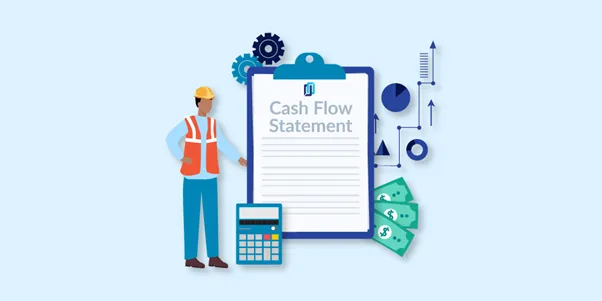What Are Sprints?
Sprints are short periods of intense work, typically lasting a few weeks. Each sprint focuses on a specific set of tasks or features. Every sprint has a well-defined goal that contributes to the overall project objective. It’s like having a mini-milestone to celebrate progress within the bigger picture.
Think of sprints as building blocks. Each one builds upon the previous one, allowing the team to adapt and refine their approach as they go. It’s not a straight shot to the finish line but a series of focused efforts leading to the final product.
What Is Sprint Planning?
So, what exactly Sprint planning is?
It’s a technique in project management that involves breaking down tasks into smaller tasks with some specific deadlines. It helps project managers anticipate the needs of their team and efficiently allocate resources accordingly.
Sprint planning is a powerful technique used by many professionals. It helps them meet deadlines and deliver better results, faster.
Want to know the 8 best sprint planning strategies? Keep reading to ensure success on your projects!
Find Out The Best Strategies For Sprint Planning
1. Highlight Workplan
Having a clear roadmap is crucial for guiding the team in the right direction from start to finish. Smart project managers use agile strategies like sprint planning to create detailed work plans. These plans show the team exactly where they’re headed and how far away that finish line is at every step.
Project managers should take time to clearly define all the key milestones, deadlines, deliverables, and tasks upfront. Doing this prevents any confusion or misunderstandings later on about what needs to be done next. Everybody stays on the same page.
2. Clear Objectives
Having clear goals is just as important as knowing the roadmap. During that initial sprint planning meeting, the whole team needs to agree on the specific goal they’re working towards and what tasks are required to achieve it. Alignment is everything!
In this matter, strategic planning facilitation will ensure that this alignment is achieved by guiding the team through a structured process, setting clear objectives, and defining actionable steps.
User stories can be super helpful for ensuring the entire team understands the project’s end goal from the customer’s perspective. They make it easier to determine exactly which tasks are essential and need to be completed during this specific sprint.
There are usually a ton of potential tasks for any given project. But of course, not all of them are critical or core requirements. The key is identifying just the vital, core tasks that should be prioritized and given the most attention during sprint planning. Everything else can wait.
When using those user stories as a basis for planning out the sprint, make sure to only include the highest priority, need-to-have tasks. The non-essentials can be pushed to future sprints. Free project management software can help simplify and streamline this process.
Breaking things down into clear, bite-sized steps prevents anything from slipping through the cracks. Using short, simple sentences makes these crucial sprint planning tactics way easier to understand and act on. The clearer the strategy, the better the outcome!
———————————————————————————————————————————————————
Also Read: Tips and Tricks For Better Project Management
———————————————————————————————————————————————————
3. Assign Work
Assigning work during the sprint planning meeting is also crucial. This lets the team know exactly who is responsible for which tasks. It prevents any confusion later on.
The team must be split into smaller groups. Each group is then responsible for completing a specific set of tasks related to the overall project goal. This ensures everyone is contributing meaningfully.
If any tasks need to be done by someone outside the core team, assign those to a team member during the meeting. They’ll be the main point of contact.
Also, if a new person joins the team or someone leaves, share that update with everyone. That way, roles and responsibilities stay clear.
4. Incorporate Feedback and Insights
Getting feedback and insights from stakeholders during sprint planning is valuable too. They keep everyone aligned and headed in the right direction with the project.
These feedbacks can help you with time management. If a task doesn’t seem too complex, you don’t need to spend ages discussing it.
Flexibility is essential during these meetings. The team may need to adjust the plan based on new information or changes. Use the meeting to set an achievable goal that can be adapted as needed.
The clearer the roles, the better the outcomes. An open discussion helps distribute the workload fairly while giving each person a defined purpose.
5. Make the Sprint Planning Interactive
One way to make sprint planning more interactive? Use a whiteboard or flip chart! Everyone can see the tasks being discussed, which helps keep people on track. It’s also smart to designate someone to track the sprint’s progress.
Sprint planning meetings should be conducted when the whole team is physically present in the same room. Virtual meetings just don’t work as well – it’s too easy for folks to get distracted or zone out.
6. Use the Best Tools for Communication
There might be a team working from home also!
That’s where you need proper communication methods with the right tools. You can embrace common methods of connecting, such as web conferencing, voice calls, instant messaging, push-to-talk, and email. Just make sure everyone can access the same tool for consistency.
7. Don’t Hurry to Finish the Sprint Plan Meeting
As this strategy says “Don’t rush through the sprint planning meeting to wrap it up quickly.” It will eventually lead to confusion and frustration down the line. You might have to conduct another meeting which will eat up more time you could have used somewhere else.
Take the proper time to thoroughly discuss each goal and task. Develop a clear plan for how everything will be completed.
You can keep your focussed and motivated by assigning due dates to tasks. Having a clear timeline makes it easier to spot potential roadblocks too. The team can then tackle solutions proactively.
Before moving forward, ensure everyone is genuinely on board with the full sprint plan. This prevents misunderstandings that could slow progress. Using project planning software can also streamline this process.
The more interactive and inclusive the meeting, the smoother your sprints will go. Visuals, clear roles, and open discussion breed alignment. A little extra planning upfront pays major dividends!
————————————————————————————————————————————————————————
Also Read: How Can I Accelerate My Business with Custom Invoice Workflow Management?
————————————————————————————————————————————————————————
8. Clarity of Project Scope
Clarity of project scope is one of the most important aspects of a successful project. Without it, it will be difficult for the team to know what they are working on and how to complete it. Below are some significant points that ensure clarity of project scope:
- The project objectives should be clearly defined.
- The boundaries of the project should be set.
- The stakeholders’ expectations should be clarified.
- The deliverables should be outlined.
If these things are not done, it can lead to confusion and frustration among team members and even cancel projects.
Invoicera: An Ultimate Solution for Sprint Project Management
When it comes to project management software, Invoicera is the total package. It’s got all the key features like invoicing, expense tracking, time sheets, and billing – all in one slick platform.
You also can:
- Create and start new projects with simple project management software.
- Assign and evaluate project reports.
- Log work hours.
- Track bill.
- Unlock multi-level security features to keep your online project management account safe from any unwanted intrusion.
One of the best things about Invoicera is how it helps you stay organized. You can create different folders for all your various projects. Then it’s super easy to just drag-and-drop tasks between folders to update their status or priority. No more losing track of what’s what!
The expense tracking is also a lifesaver. With Invoicera, you can quickly pull up a detailed expense report by project or any date range. This makes it a breeze to create accurate budgets and see which areas are driving the most revenue.
Between the dashboards, folders, reports and more, Invoicera gives you all the tools to manage projects effectively. It lets you stay on top of every detail so projects get completed on time and within budget. No dropped balls!
Concluding Thoughts
Mastering the art of sprint planning is essential for success. By incorporating strategies such as highlighting work plans, setting clear objectives, assigning tasks, and fostering collaboration, teams can navigate through challenges with agility and precision.
Invoicera simplifies your project management needs. This all-in-one platform handles every aspect like invoicing, expenses, time tracking, billing and more. No more juggling different tools and apps!
If you want to crush your project deadlines while also watching costs, look no further. Invoicera makes it easy, giving you more time to focus on actually running your successful business. You’ll wonder how you ever managed projects without it!
FAQs
How often should we conduct sprint planning sessions?
You should perform sprint planning sessions from one to four weeks. It generally depends on your project requirements and team dynamics.
Note: You must maintain a proper and consistent schedule for better project results.
How can sprint planning benefit project managers and teams?
Sprint planning facilitates:
- Better project visibility
- Enhanced collaboration
- Improved alignment among team members
- Fosters accountability
It ultimately leads to more successful project outcomes.
How can sprint project management be aided by project management software such as Invoicera?
Invoicera comes with all features related to project management, such as creating projects and tasks, collaboration within a team, and more.
In addition, you can track project time and convert them into accurate invoices.
How can teams manage last-minute changes or obstacles during a sprint?
Agile approaches promote adaptability and flexibility in order to handle last-minute changes or unforeseen challenges during sprints.
To ensure that there is as little disruption to the sprint’s progress as possible, teams can employ strategies like:
- Daily stand-up meetings
- Backlog grooming sessions
- Retrospective meetings to quickly identify and address challenges

















